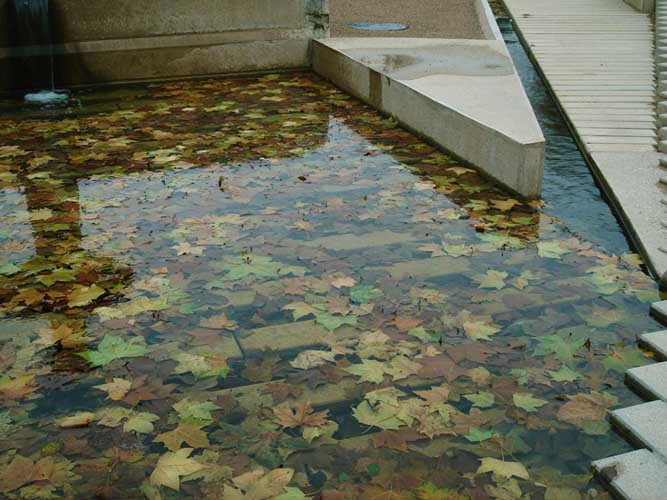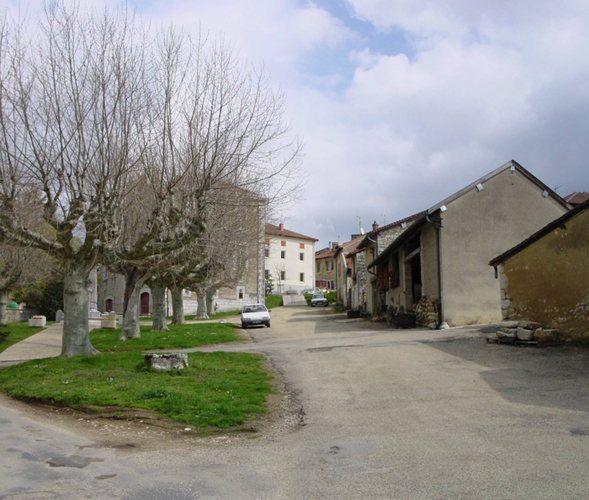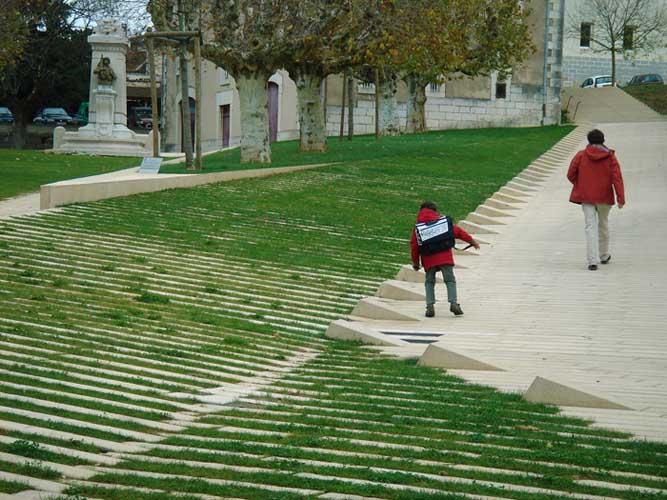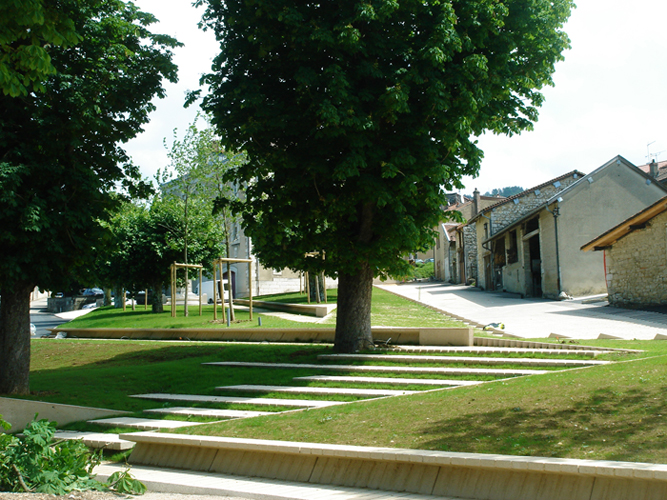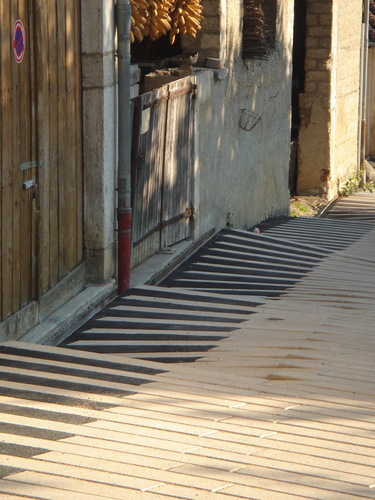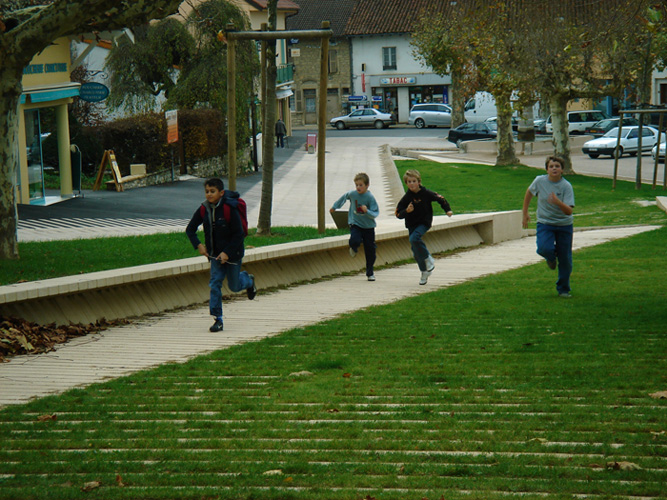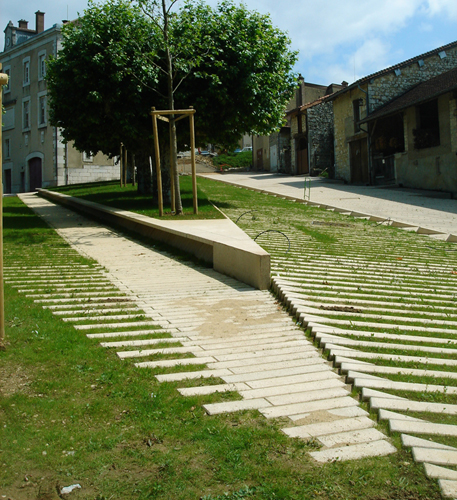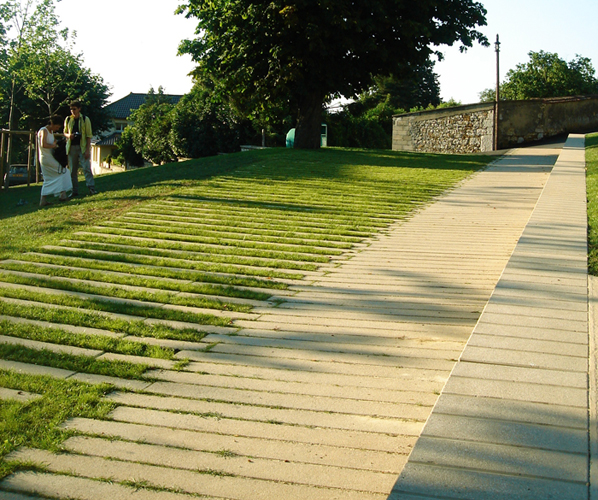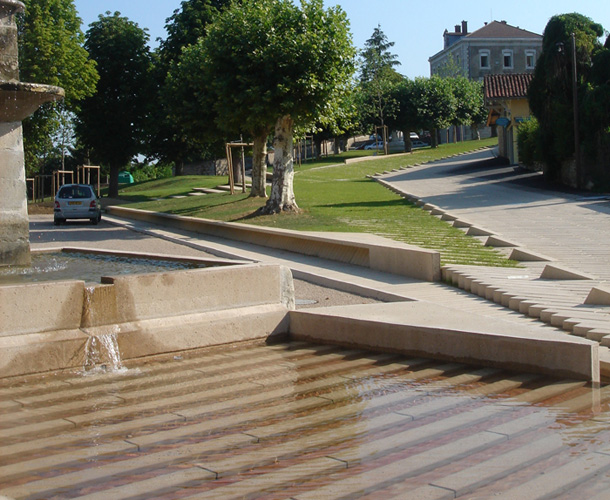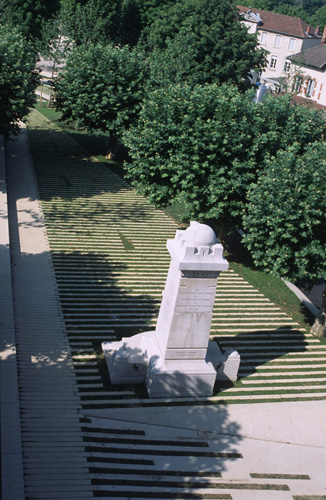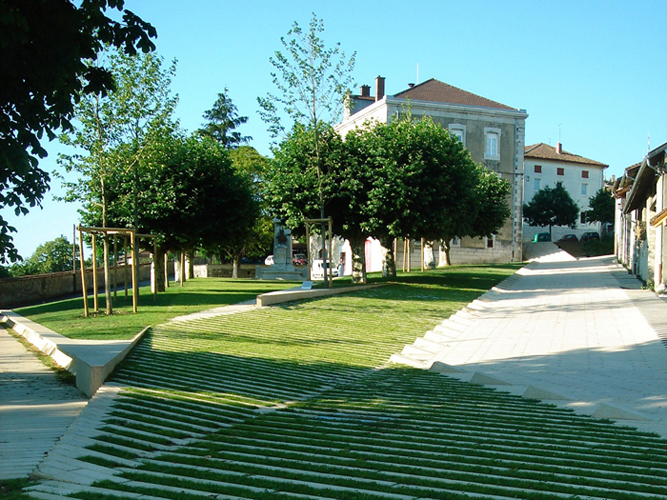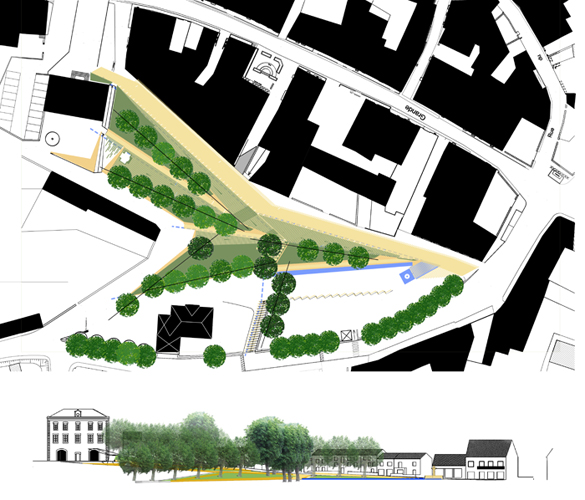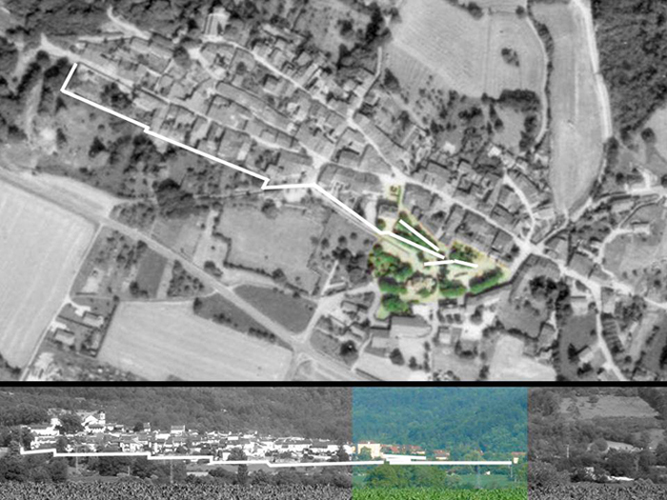Estat previ
Situat al peu del vessant occidental del massís del Jura, Treffort ha conservat fins avui la configuració d’un petit poble rural, dens i fortificat que s’aboca sobre una extensa plana agrícola de l’antiga província francesa de la Bresse. Just després de la Revolució, es va crear als afores del poble un «champ de foire», esplanada destinada a acollir les fires de bestiar, el mercat setmanal i les festes populars de la regió. Per causa d’una tímida expansió del poble, que ha vist aparèixer algunes indústries i petits barris a la seva part baixa, aquesta esplanada, coneguda popularment com el «Foirail», ha passat a ocupar una posició central. Ara, a més d’articular la trobada entre la plana agrícola i el vessant del Jura, és també un punt d’inflexió entre el nucli antic de Treffort i els seus nous creixements.Amb un relleu irregular i en pendent, el «Foirail» es caracteritza per la presència de diverses fileres de plataners centenaris, plantats seguint la tradició dels enginyers napoleònics de falcar amb les seves arrels el paviment de camins o esplanades i evitar-ne l’erosió causada per l’escorrentia de l’aigua. Precisament, la seva posició geogràfica fa que l’indret rebi amb abundància l’aigua que s’escola des del Jura i que acaba brollant a l’antic abeurador de la fira de bestiar. Aquesta font, juntament amb una balança pública i un monument als morts, s’han conservat fins avui com a testimonis de la importància que el «Foirail» tingué temps enrere. Tot i això, l’escassa salut dels arbres, l’erosionat estat del sòl i, sobretot, la presència indiscriminada del vehicle privat han fet que la seva forma i el seu caràcter s’anessin esvaint amb el temps.
Objecte de la intervenció
Assumida la lenta però continuada transformació del petit poble rural en un nucli més urbà, l’any 2004, l’ajuntament de Treffort-Cuisiat va entendre el «Foirail» com un element central i estructurador, capaç d’articular i ordenar el seu creixement present i futur. A partir de les demandes recollides entre els ciutadans en un procés consultiu, es va convocar un concurs per a la seva consolidació física i la seva dignificació moral. El principal repte de l’actuació radicava en la doble voluntat de respectar el seu passat rural i, a la vegada, respondre a la seva nova identitat urbana.Descripció
Per mitja d’un joc geomètric de terrasses i talussos triangulars, l’actuació redibuixa i fixa les diluïdes traces preexistents, donades per la topografia del lloc, per les fileres d’arbres i pels recorreguts de l’aigua d’escorrentia. Aquesta aigua ha estat canalitzada i forma ara un estanyol davant l’abeurador, que ha estat restaurat juntament amb la balança pública i el monument als morts. S’han completat amb exemplars nous les fileres de plataners centenaris, que han marcat les directrius de la nova triangulació geomètrica i dels especejaments dels paviments.Resolts a partir d’una única peça de formigó prefabricat, de 175 x 20 x 12 centímetres, aquests paviments s’aparellen de maneres diverses per donar resposta a diferents situacions. Si bé en alguns moments les peces es concentren densament per marcar els recorreguts i els llocs d’estada, altres cops se separen mútuament per deixar que la gespa creixi entre les seves juntures i donar pas, gradualment, als talussos herbosos. En altres casos, l’aparell de les peces es plega per formar bancs correguts, s’aixeca puntualment per formar borns que delimiten els recorreguts o es desplega en superfícies reglades que posen en contacte el pendent d’una rampa amb el llindar d’accés a cada habitatge.
A través de la il·luminació, que és voluntàriament tènue però que es concentra als llocs de pas, es posen en valor la font, la balança i el monument. Ara, els vianants disposen quotidianament d’un espai ampli i exclusiu, ja que els vehicles aparcats han estat desplaçats a la part baixa del poble. El «Foirail» acull de nou el mercat setmanal, les celebracions de la festa major i algunes fires comarcals.
Valoració
Des de l’antiguitat, la designació i preservació d’un espai buit per acollir un mercat ha constituït un dels més freqüents actes fundacionals de la ciutat. La concentració de les mercaderies en un sol punt genera la centralitat necessària per que molts individus decideixin viure junts. El «champ de foire» de Treffort va exercir aquesta funció al final del segle XVIII i la torna a exercir avui.La primera vegada fou establert sota l’influx d’un esperit republicà, il·lustrat i universalista: l’abeurador era un servei públic que proveïa d’aigua a tothom per igual; la balança pública brindava un mètode convencional, inequívoc i universal per mesurar les mercaderies; el monument als morts apel•lava a la memòria històrica col·lectiva. Per la seva banda, els plataners eren un element constructiu d’obra civil que, a través de la seva aplicació sistemàtica i racional, conferia unitat i coherència a totes les obres públiques amb què la nova era modernitzava el territori.
La segona vegada, a més de respondre a la primigènia actitud civilitzadora, el «champ de foire» obeeix a una voluntat urbanitzadora. Han estat pertinentment consolidades tant la seva integritat física com la seva funció urbana. El creixement del poble ha atorgat al «Foirail» una posició central que deixa enrere el seu caràcter rural i perifèric. Tot i donar una resposta contemporània a aquesta nova situació, l’actuació sap retre homenatge als elements integrants de la primera intervenció. Prova d’això és que la totalitat del pla del terra ha estat determinada pel paper primordial dels plataners preexistents. No solament les fileres d’arbres han servit de pauta geomètrica a la planta de la intervenció, sinó que el punt de trobada de cadascun dels seus troncs amb el sòl ha definit els diferents nivells i inclinacions dels seus panys triangulars.
David Bravo Bordas, arquitecte
[Darrera actualització: 02/05/2018]


